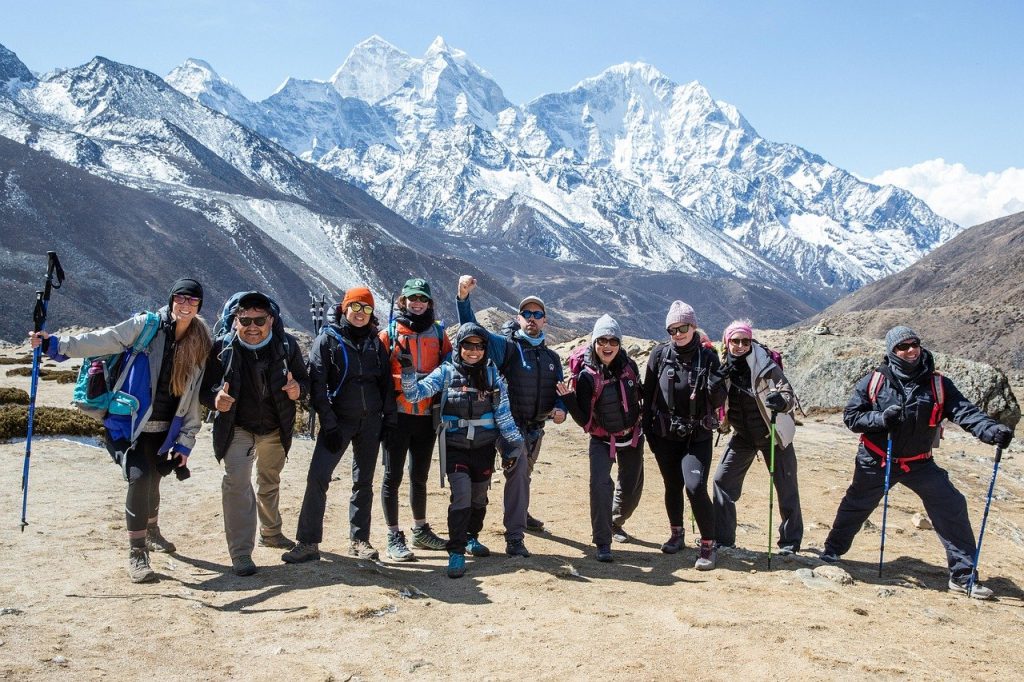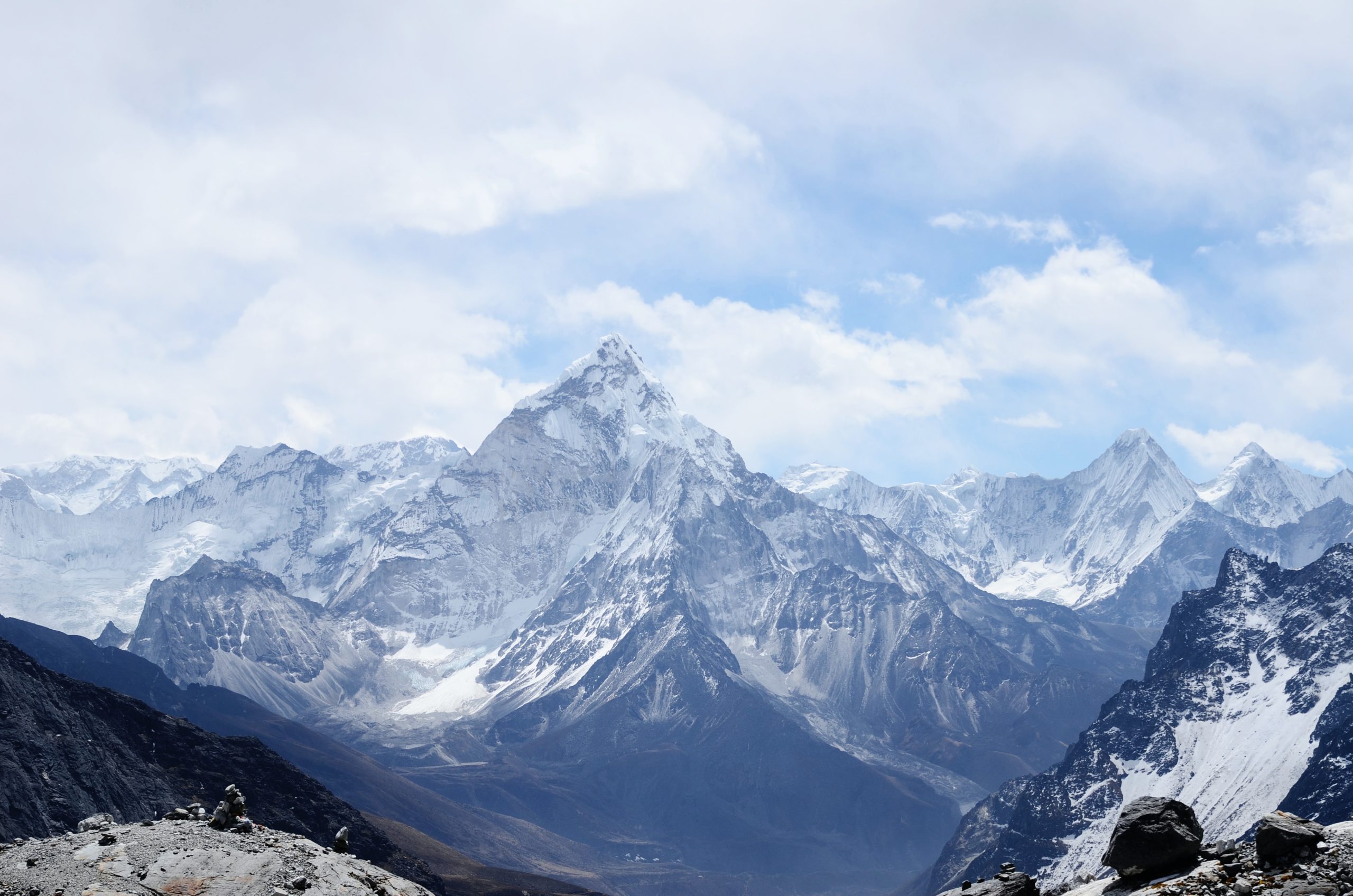The Everest Three Pass Trek is a challenging and adventurous trek that includes some of the highest and most beautiful mountain passes in the world. In the majestic Nepalese Himalayas, this trek offers a unique exploration of Everest, and keen travelers take three high mountain passes Renzo La, Cho La, and Kongma La.
Likewise, each pass presents a unique and demanding climb and reveals breathtaking images of snow-capped mountains, scenic valleys, and quaint Sherpa villages.
Moreover, the trek is not only a test of physical endurance but also a rewarding activity in the heart of the Khumbu region. It allows you to immerse yourself more in the local culture and forge a deeper connection with the Himalayan landscape.
Everest Three Pass Trek Highlights
- Challenging Mountain Passes: Conquer three high-altitude passes - Renjo La, Cho La, and Kongma La - offering exhilarating climbs and panoramic vistas.
- Spectacular Scenery: Immerse yourself in breathtaking Himalayan landscapes, including iconic views of Mount Everest and neighbouring peaks.
- Remote and Pristine Trails: Traverse off-the-beaten-path routes, providing a sense of seclusion and allowing you to experience untouched natural beauty.
- Sherpa Culture: Interact with Sherpa communities and immerse yourself in their rich culture, traditions, and hospitality as you trek through picturesque villages.
- Everest Base Camp: Visit the iconic Everest Base Camp, a pilgrimage for mountaineers, and experience the unique ambience of this high-altitude camp.
- Gokyo Lakes: Explore the mesmerizing Gokyo Lakes, a system of turquoise lakes nestled amidst towering mountains, adding to the trek's beauty.
- Gokyo Ri and Kala Patthar: Ascend Gokyo Ri and Kala Patthar for unparalleled panoramic views of Everest, Lhotse, Makalu, and neighbouring peaks.
- Diverse Flora and Fauna: Encounter diverse flora and fauna, including rhododendron forests, musk deer, and a variety of bird species.
- Personal Achievement: Challenge yourself physically and mentally, achieving a remarkable trekking milestone and creating lasting memories of this extraordinary adventure.
Everest Three Pass Trek Overview
The trek is not only a test of physical endurance but also a rewarding activity in the heart of the Khumbu region, allowing you to immerse yourself more in the local culture and forge a deeper connection with the Himalayan landscape.

The Thrill of the Three Passes
You embark on the Everest Three Passes Trek, which is akin to scaling nature's stairway to heaven. Each pass, a gateway to an ethereal realm, presents an adrenaline-pumping ascent, challenging even the most intrepid trekkers.
Renjo La, Cho La, and Kongma La stand as guardians of the Himalayas. Additionally, with unparalleled views and an exhilarating journey through these lofty corridors of rock and ice.
Tapestry of Himalayan Splendors
Like plucked from an artist, the trek reveals a living canvas of Himalayan wonder. Gokyo Lakes, a series of blue gems nestled between towering mountains, add a touch of serenity to this pleasant retreat.
In contrast, Gokyo Ri and Kalapattar, auspicious places favoured by the gods, display awe-inspiring images. The majesty of Everest, Lhotse, Makalu, and many other giants still linger in this place where heaven and earth meet.
Sherpa Tales and Mountain Mystique
Venturing into Everest isn’t just about endurance—it’s about exploring cultural and human resilience.
Moreover, the trail passes through Sherpa villages, with colorful prayer flags fluttering in the mountain breeze and air filled with mountaineering triumphs and ancient legends.
The burn of the Sherpas and ancient monasteries that grace the road remind travelers that mountains are not just a physical challenge but a kind of spiritual journey.
Best Season of Everest Three Pass Trek
| Season |
Best Time |
Criteria |
| Spring |
March to May |
- Mild temperatures - Blooming flora |
| Summer |
June to August |
- Warm weather |
| Autumn |
September to November |
- Clear skies - Pleasant temperatures |
| Winter |
December to February |
- Less crowded - Crisp views, snow-capped peaks |
The best time to undertake the Everest Three Passes Trek is during the spring (March to May) and autumn (September to November) seasons.
In contrast, these periods offer stable weather conditions, clear skies, and mild to warm temperatures, making for an enjoyable and safe trek.
Likewise, the spring season showcases vibrant blooming flora, adding to the trek's scenic beauty, while the autumn season offers crystal clear views of the surrounding peaks and landscapes.
Accommodation and Food
During the Everest Three Passes Trek, accommodation options mainly consist of teahouses and lodges. Teahouses provide basic facilities with shared rooms and communal dining areas, often with simple beds and shared bathrooms. Lodges offer a bit more comfort and provide private rooms with attached or shared bathrooms.
Meanwhile, meals along the trek primarily feature local dishes like dal bhat (rice and lentils), noodles, soups, and various other hearty options. The food is nutritious and designed to replenish energy for the demanding trek, and vegetarian and non-vegetarian choices are usually available.
What is the difficulty level of the Everest Three Pass Trek?
The Everest Three-Pass Expedition is considered a challenging and demanding trek due to the high altitude. Trekkers must be physically fit and well prepared for sleep during difficult and prolonged transport at high altitudes.
Additionally, going up and down the passes can be challenging, requiring good fitness, flexibility, and previous hiking experience. Altitude sickness is a concern. Adequate days of practice and gradual climbing are essential to minimize risks and ensure a safe and successful trip.


